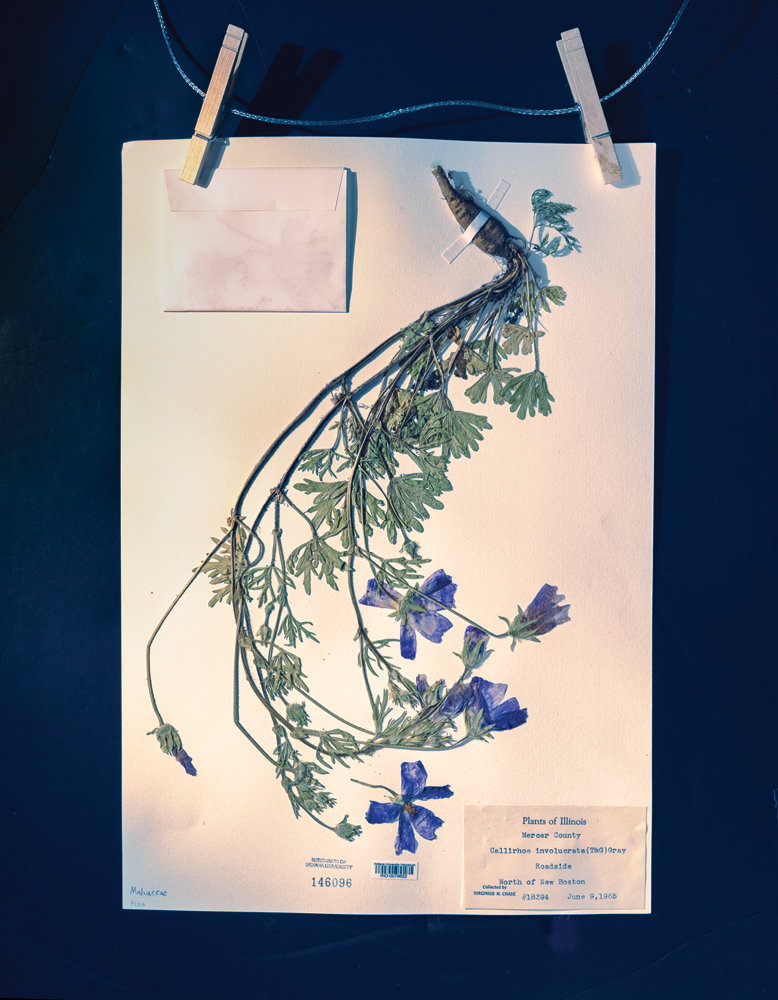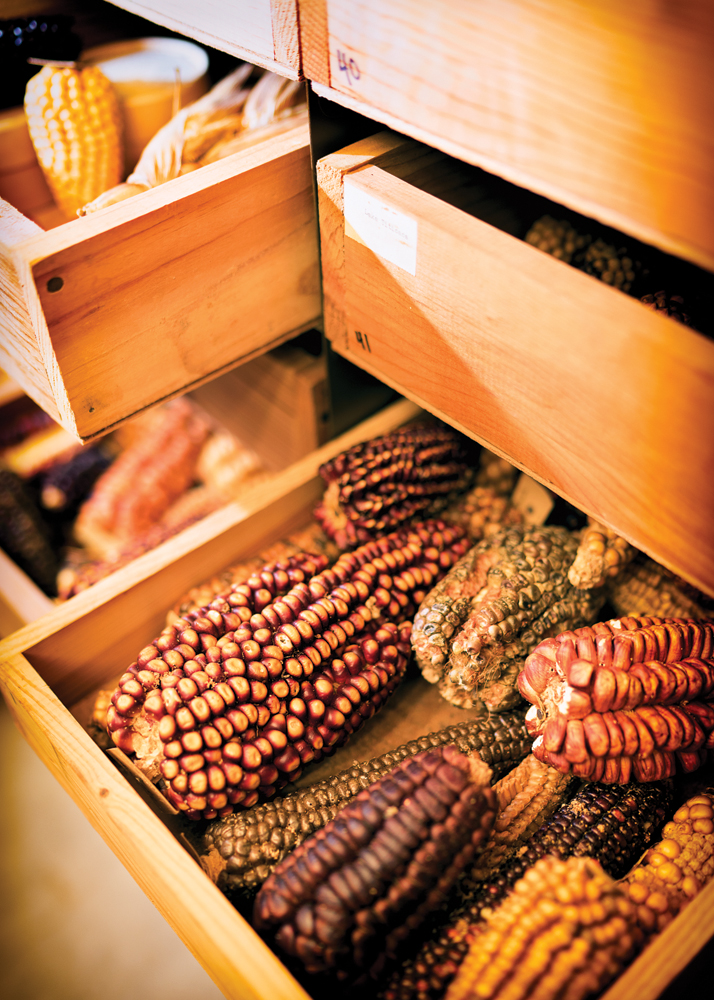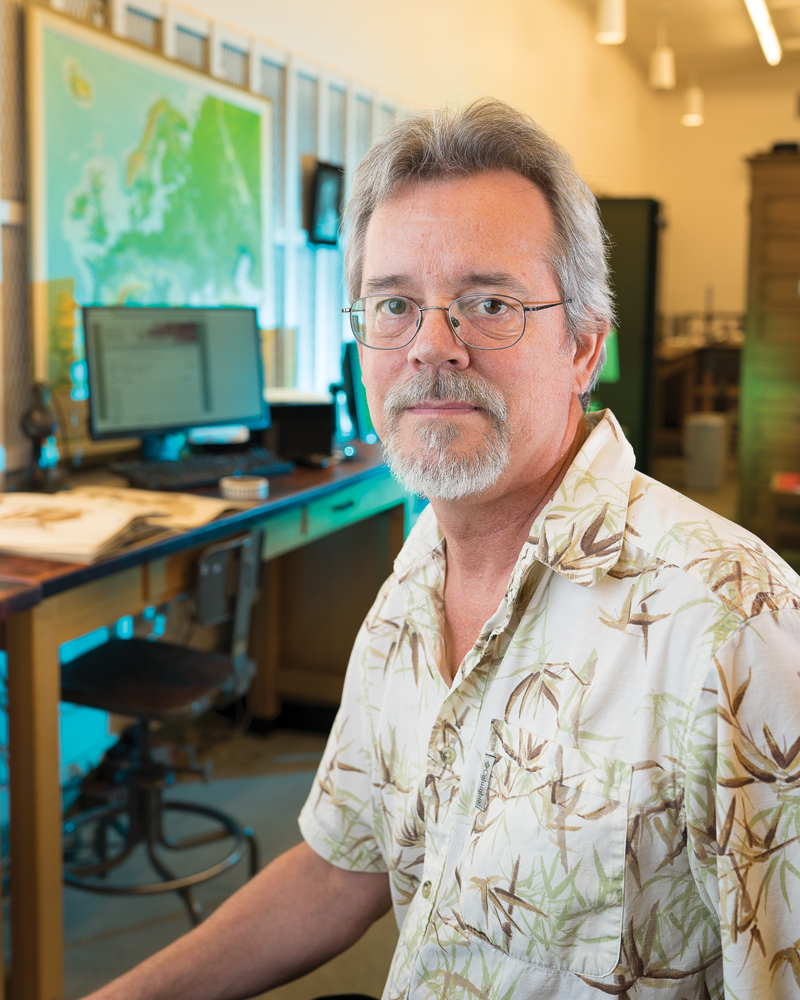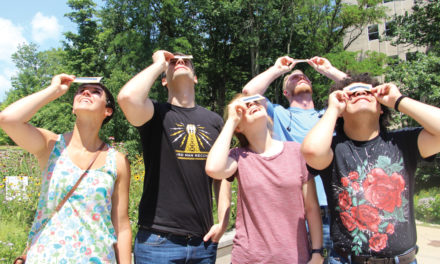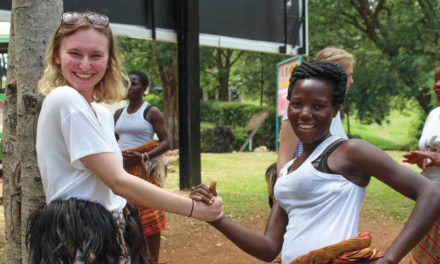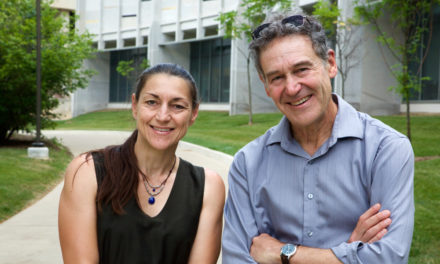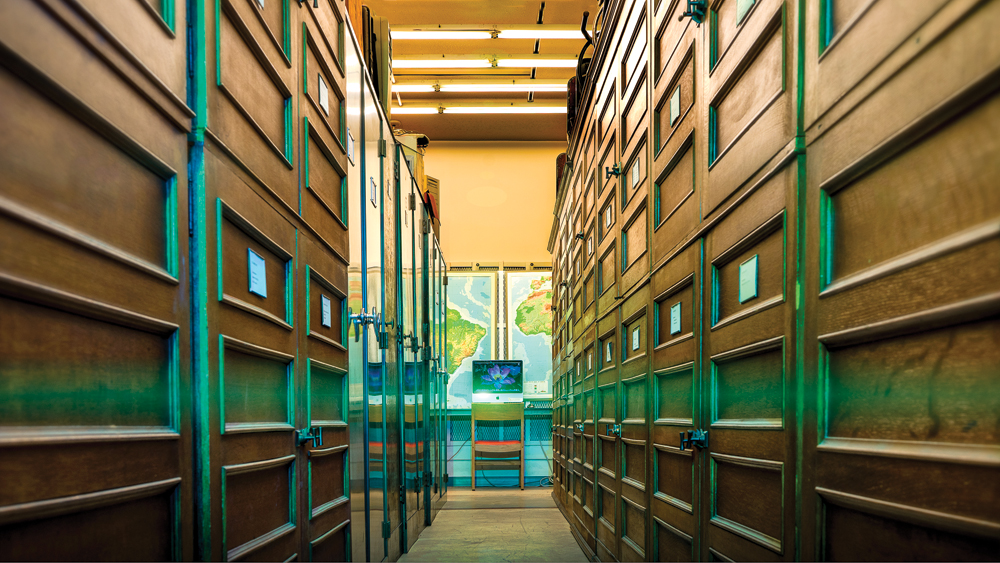
Inside Indiana University’s Herbarium. Photo by Martin Boling
BY PETER DORFMAN
Indiana University’s Herbarium, a collection of 150,000 plant samples gathered over the past 130 years, has long provided a detailed catalog of Indiana’s plant life. Now this unique museum of native plants (and a rogues’ gallery of invasive species) is going digital. Herbarium staff hope to take the entire collection online by 2019.
Scientists track what plants are growing in the wild—and where. That goes for native species, and also for non-natives spreading into areas where they may be unwelcome. Searchable by species, the database includes information on all catalogued samples, including a map showing where each plant has been collected. Location data on rare, protected species are masked.
“The difference between a dead, flat plant and a scientific specimen is the information attached to it,” says Eric Knox, the Herbarium’s director. From recent samples, Knox and his co-curators can extract DNA for sequencing, and that information is linked to the sample, along with photomicrographs and other information.
As Herbarium staff laboriously photograph and tag the samples, the information is added to a rapidly growing database maintained by the six-state Consortium of Midwest Herbaria. It aggregates resources from all member data, which includes information on plants from around the world. IU’s collection includes samples from 85 countries, but Indiana is its focus.
IU’s Herbarium is one of 15 in the consortium, and while it’s not the largest, it does include several irreplaceable collections. Its oldest specimen dates from 1867, but the core of the herbarium is the collection it acquired from Charles Deam, a pharmacist and amateur botanist who gathered 78,000 Indiana native plant samples as he painstakingly developed the catalog that became Flora of Indiana, a book published in 1940.
If an amateur horticulturist wants to submit a specimen, curators can provide instructions on what data to include and how to press the plant to preserve it. “Photographs of plants in their habitats, along with the GPS information, can be important contributions too,” Knox says. The advance of invasive species and the loss of biodiversity due to climate change make ongoing specimen collection important, including contributions from citizen scientists.
Curators can be reached by email at [email protected] or by phone at 812-855-5007.


